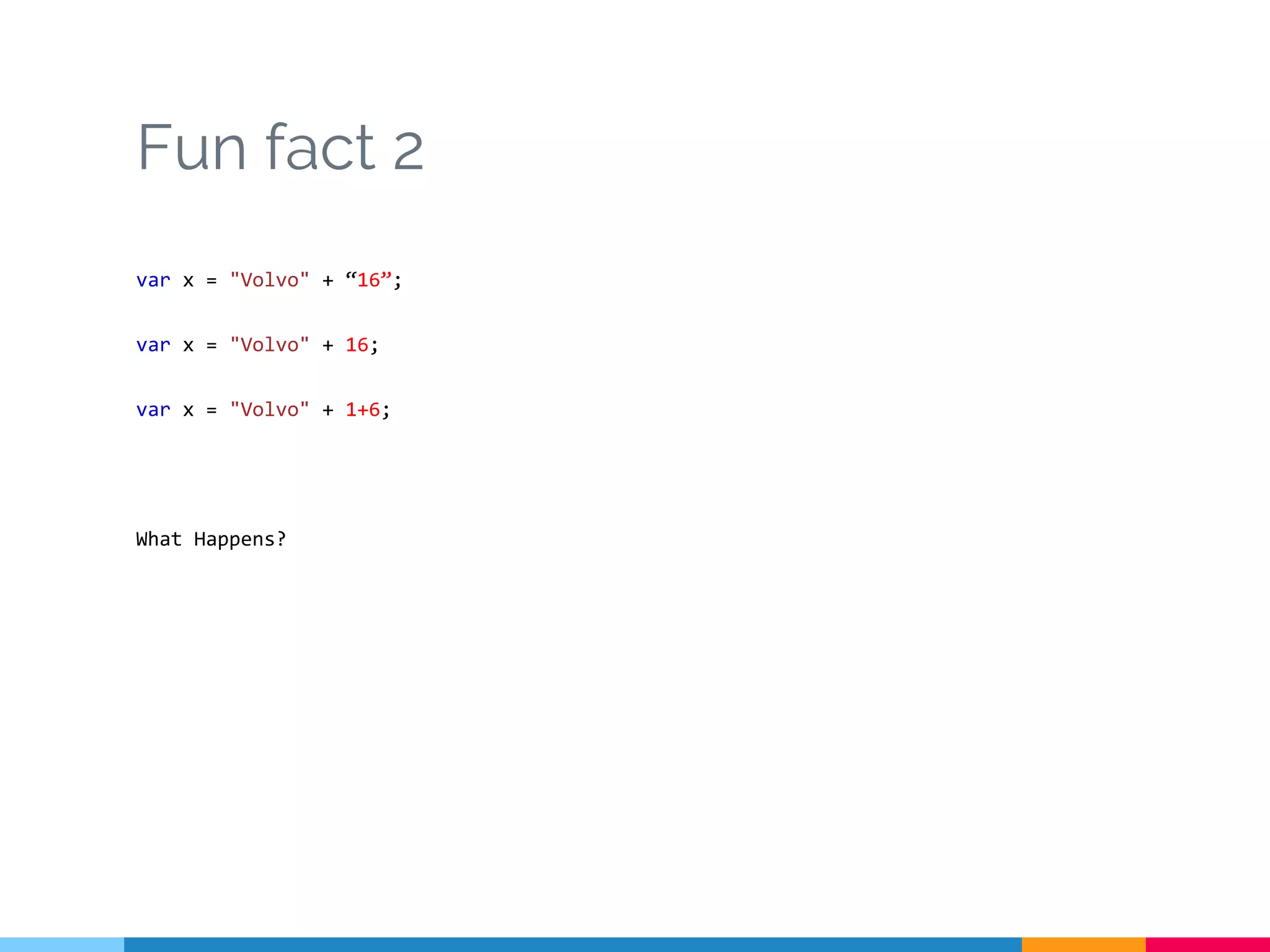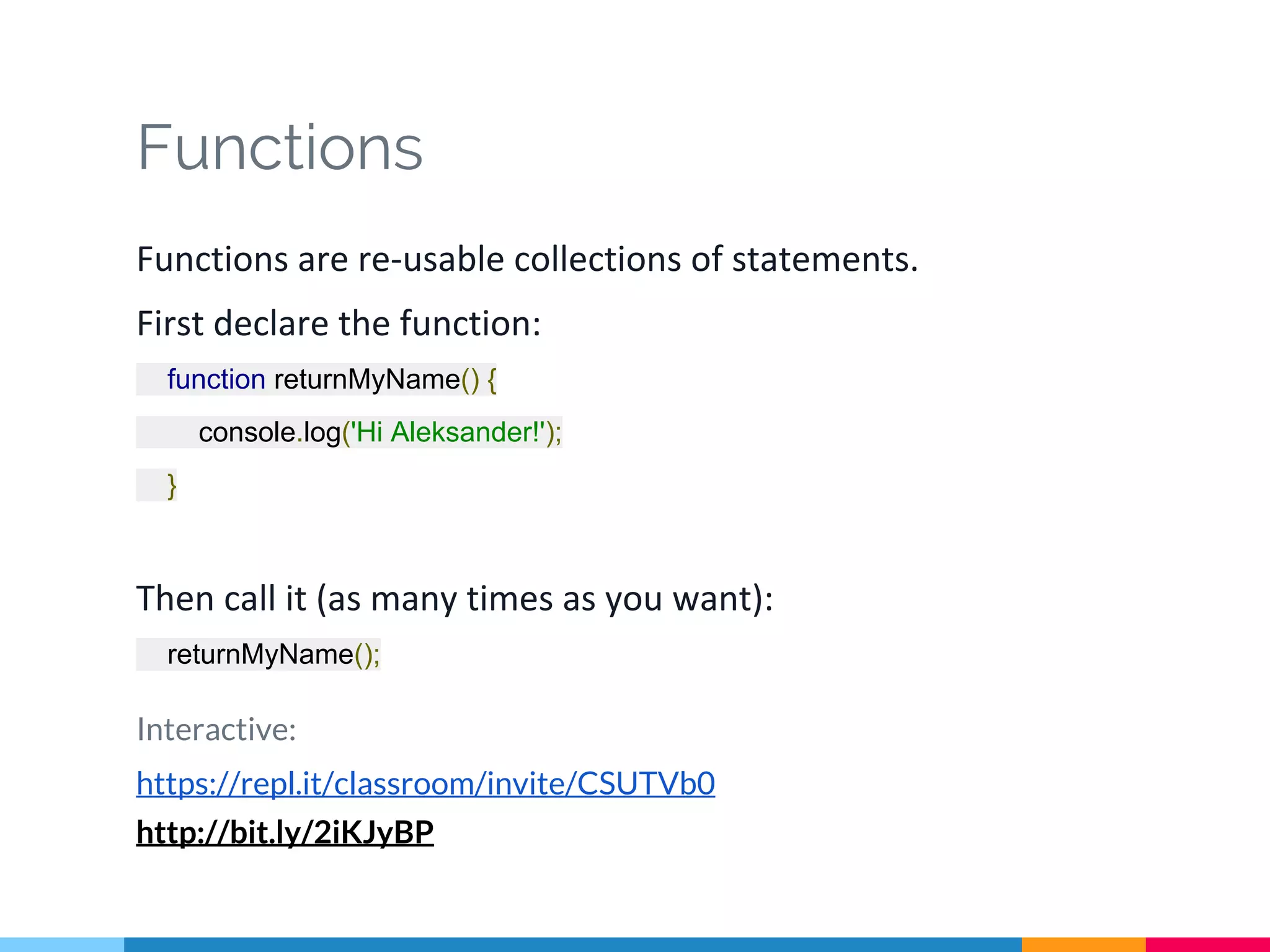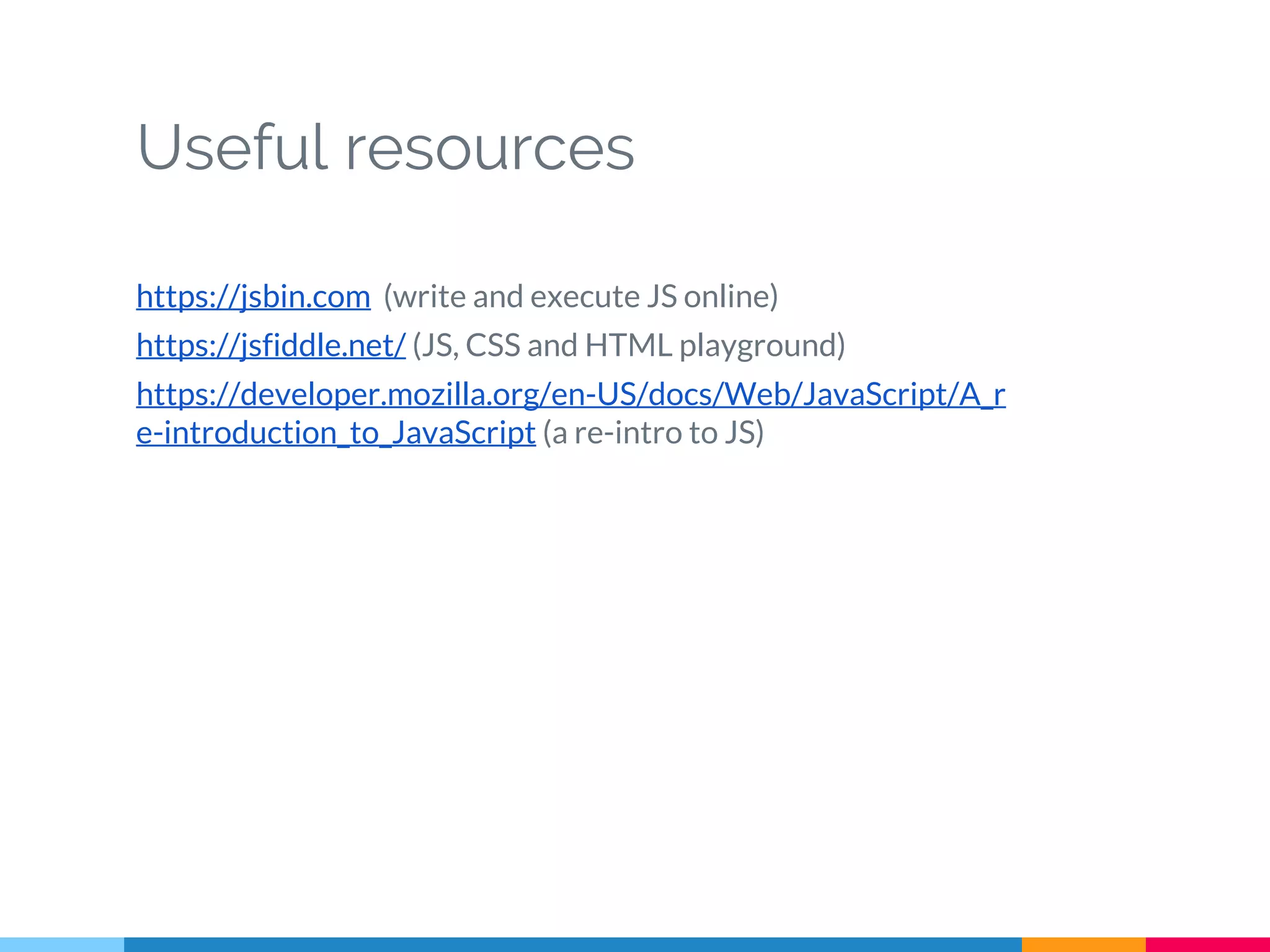This document provides an introduction and overview of JavaScript. It begins with an agenda that outlines the topics to be covered, including the history of JS, basic concepts like statements, variables, data types, and functions. The document then covers the brief history of JS from its creation in 1995 to recent developments. It discusses some of the basic building blocks of JS like statements, variables, data types including strings, objects, and arrays. It also covers functions and provides examples of declaring and calling functions. Resources for learning more about JS are listed at the end.
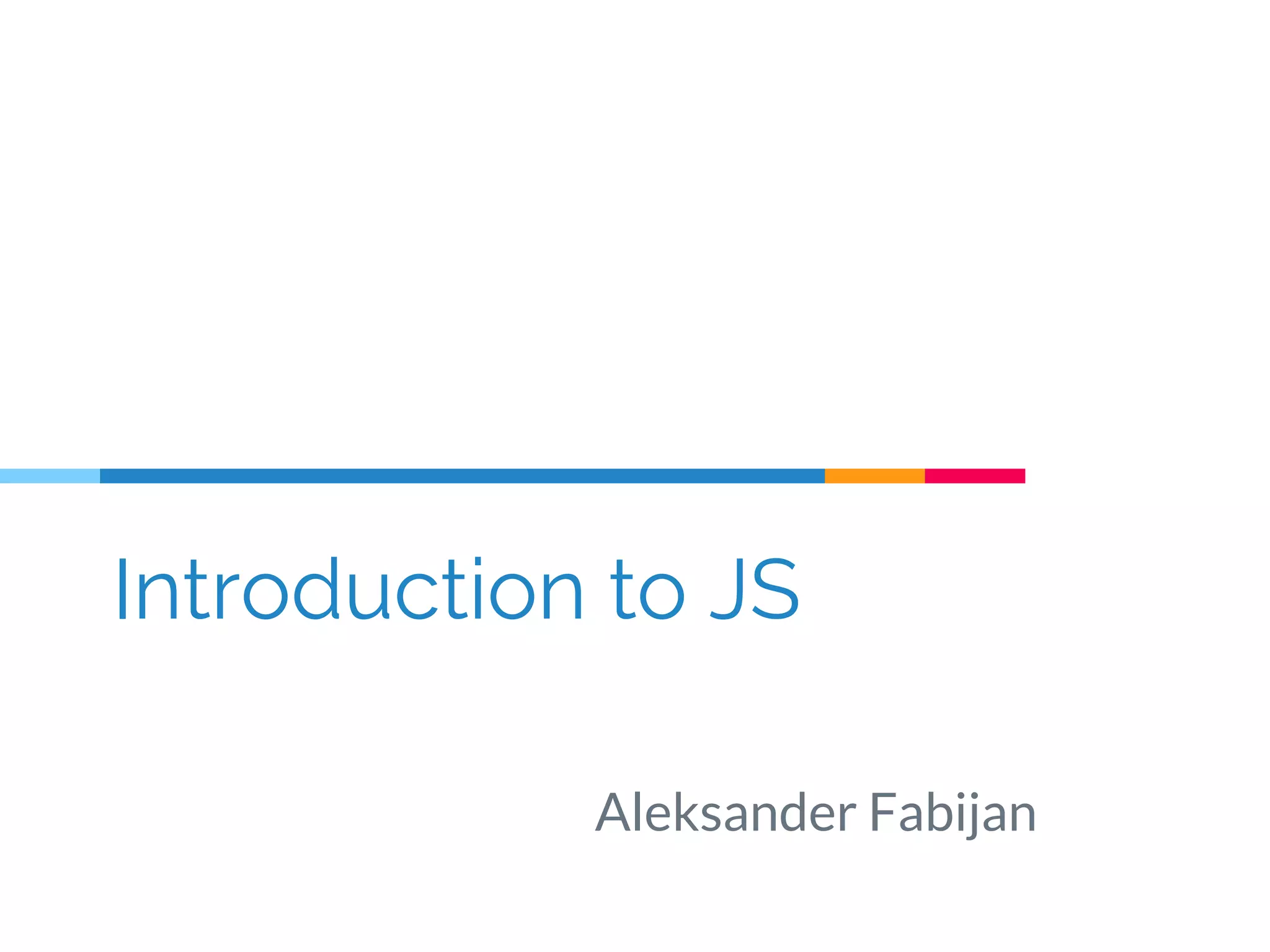
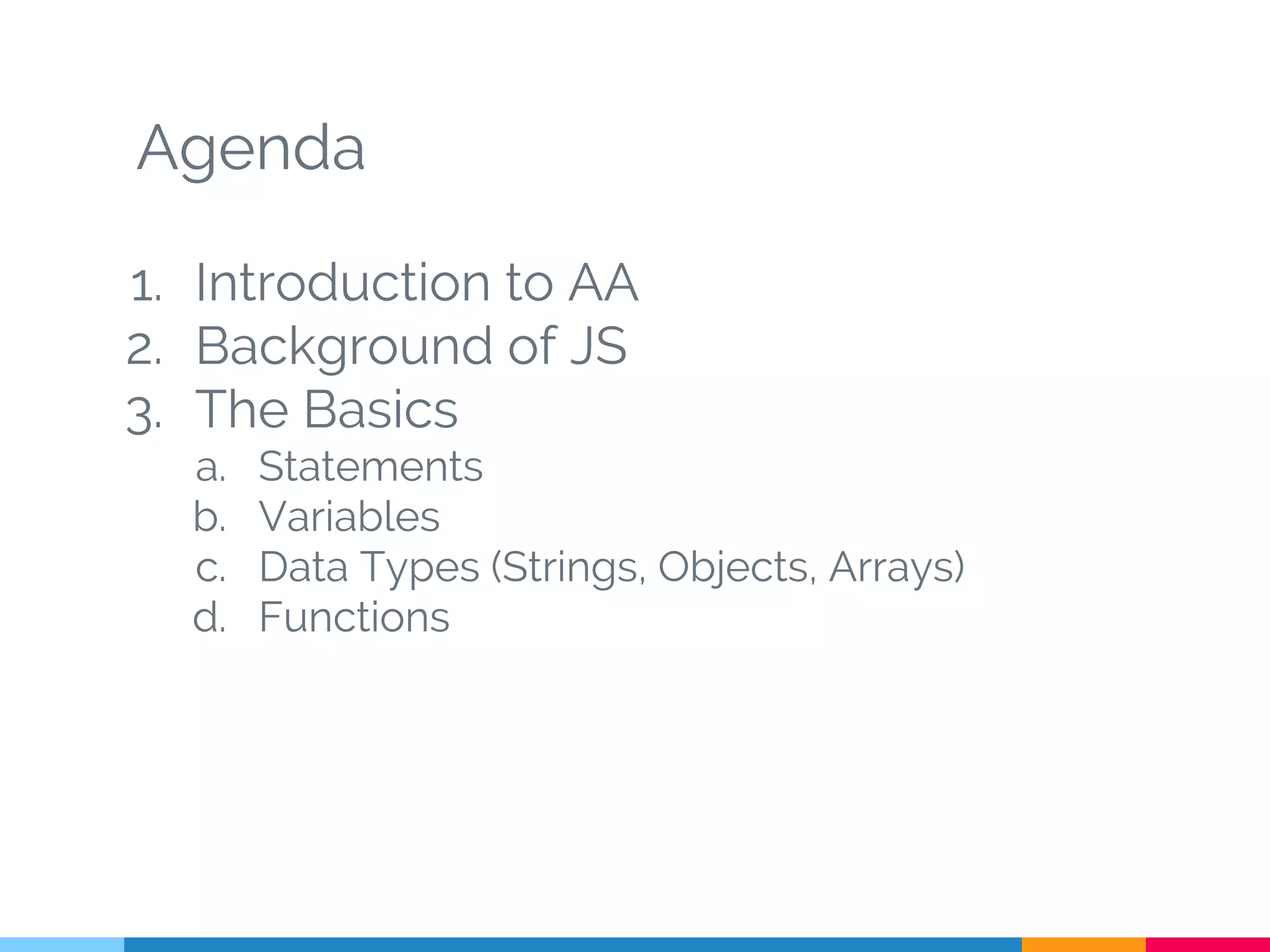

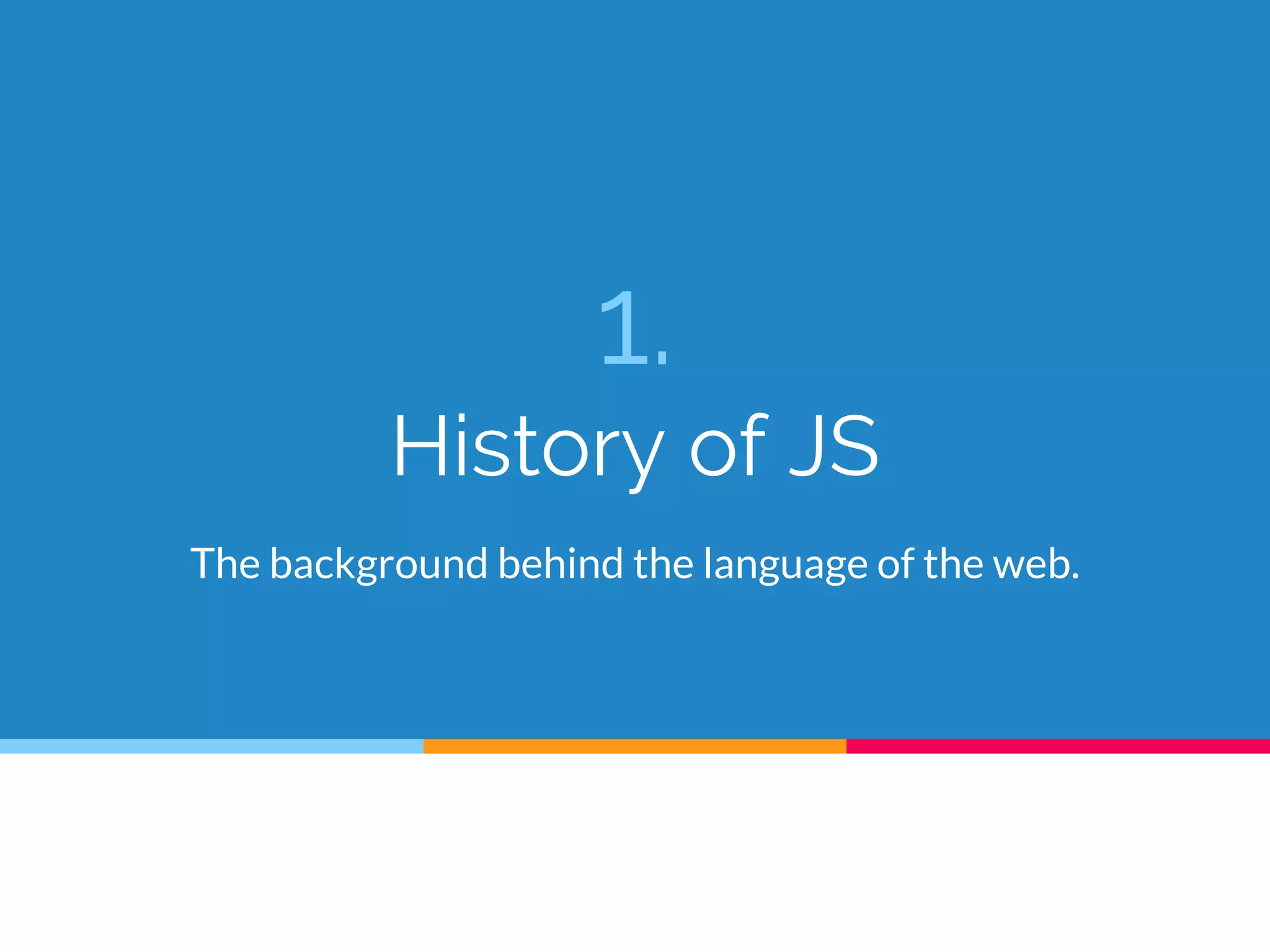
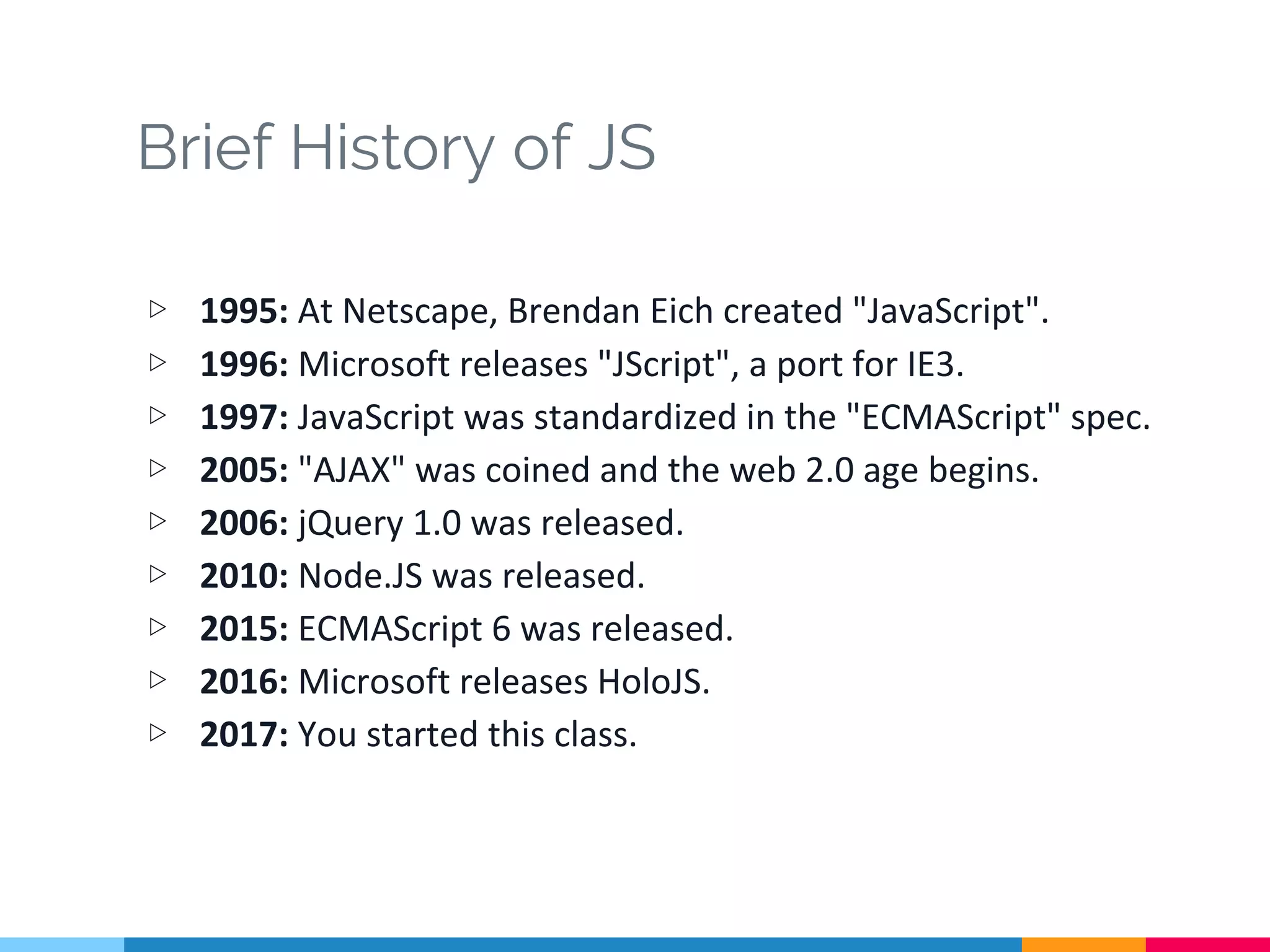
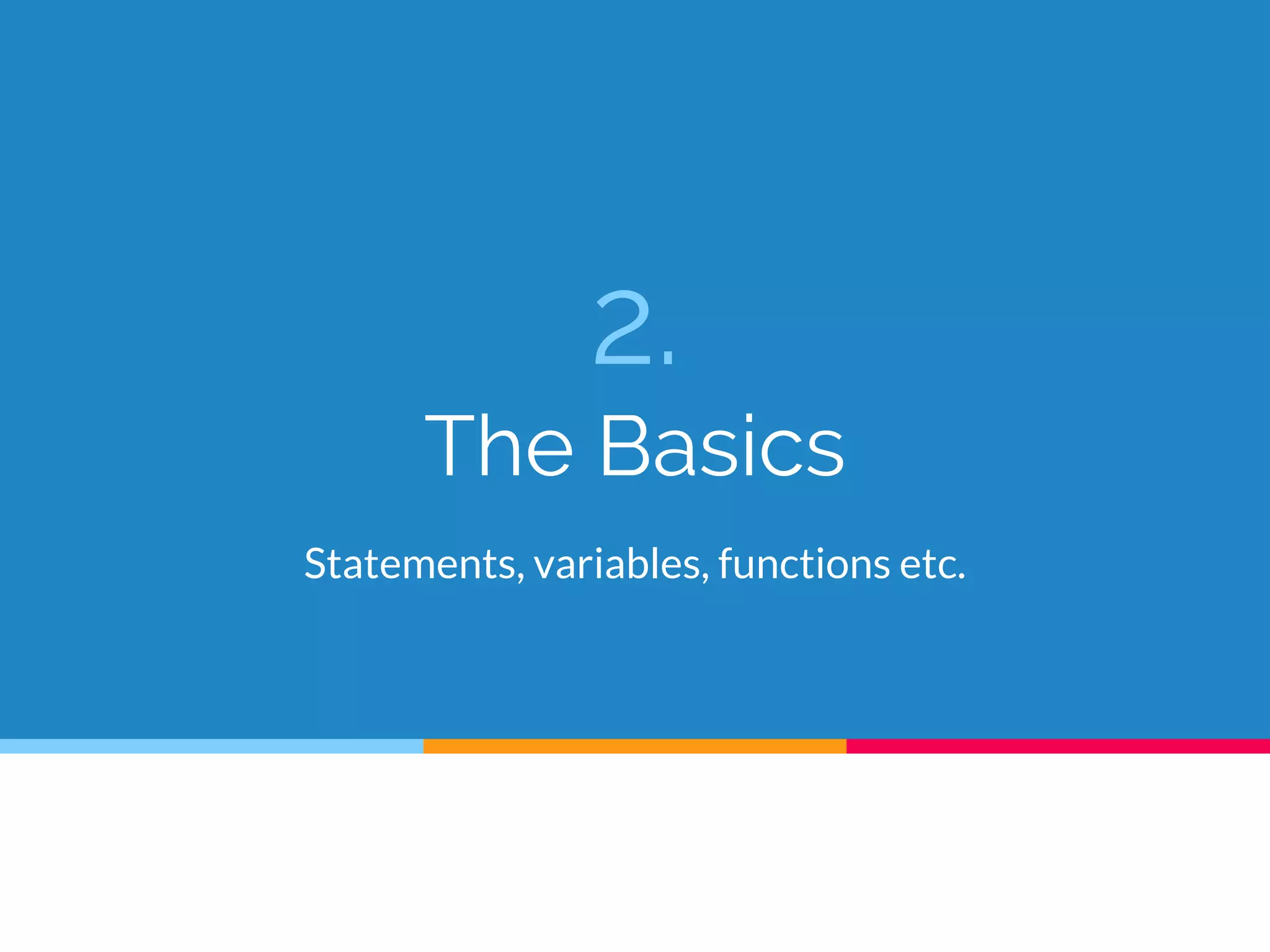

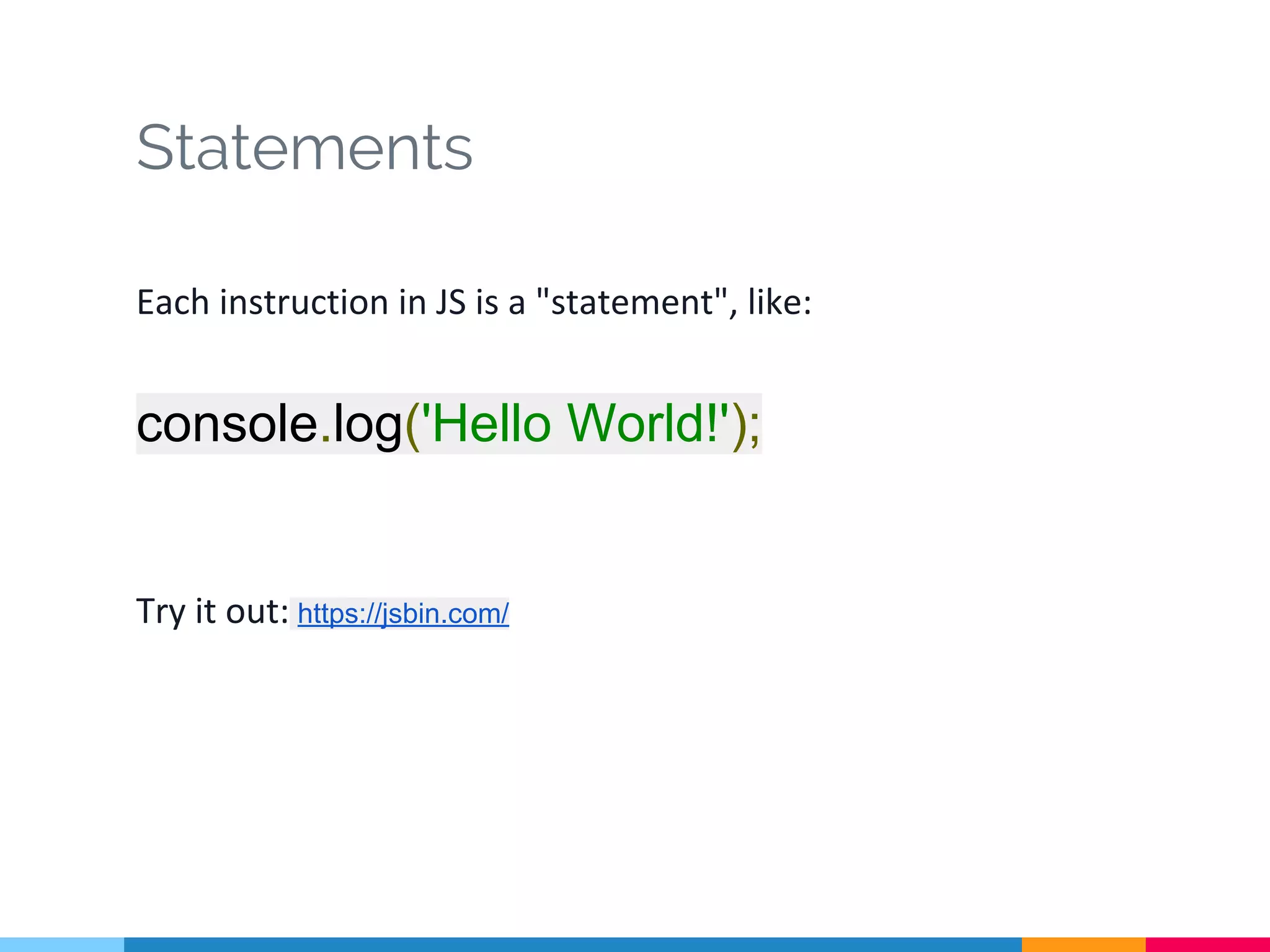
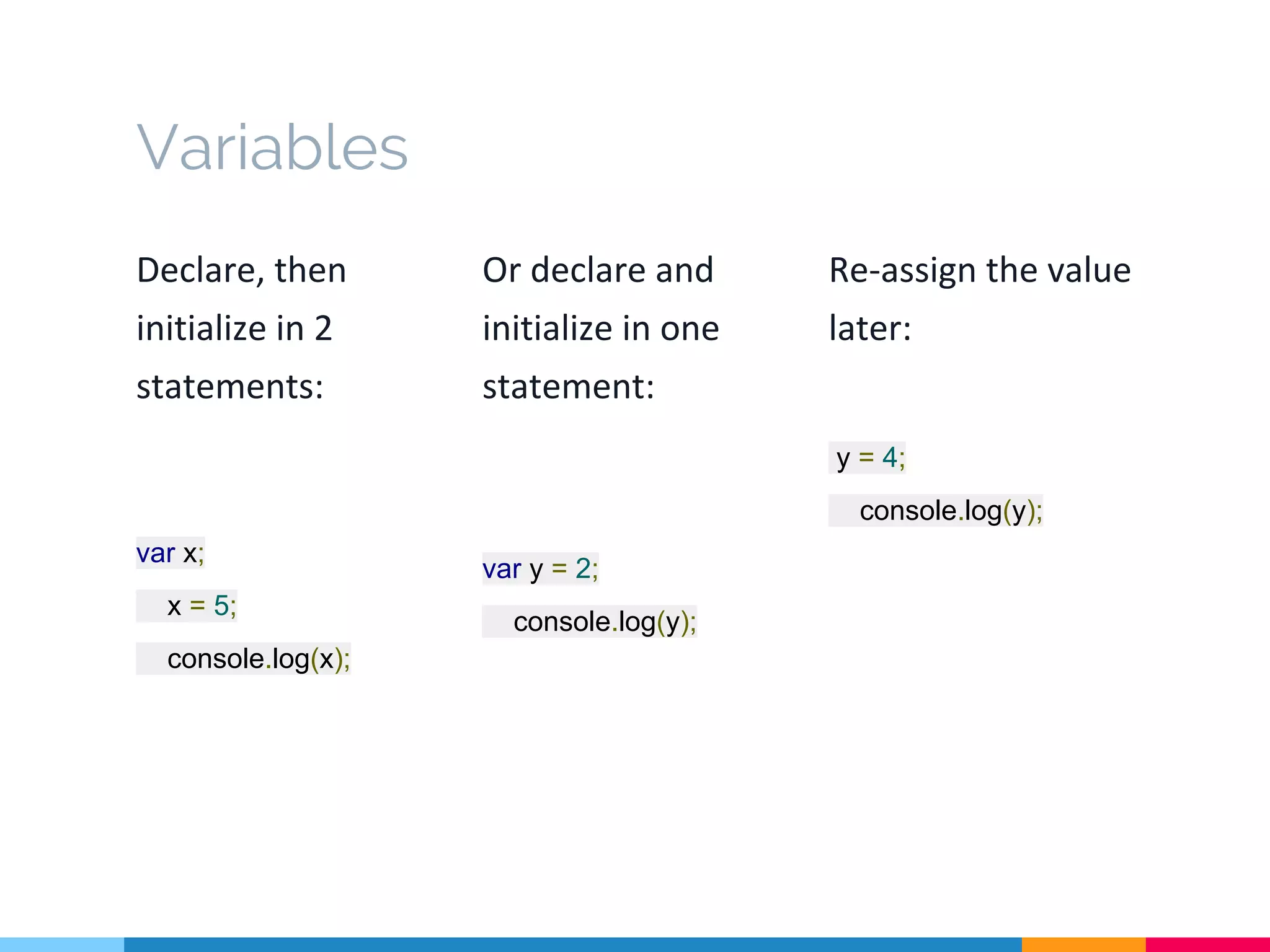
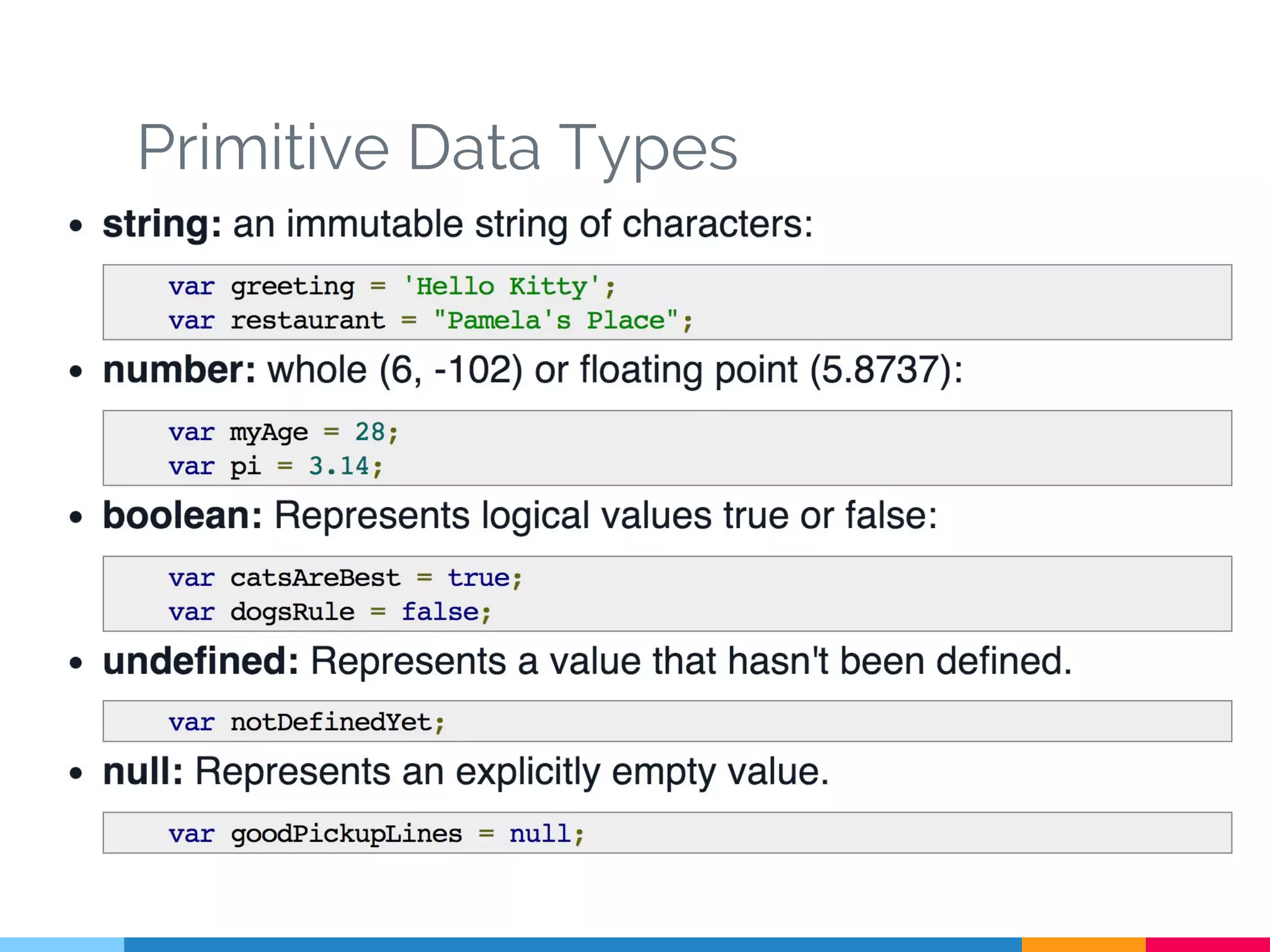
![Strings
A string holds an ordered list of character:
var alphabet = "abcdefghijklmnopqrstuvwxyz";
The length property reports the size of the string:
console.log(alphabet.length); // 26
Each character has an index. The first character is always at index 0.
The last character is always at index length-1:
console.log(alphabet[0]); // 'a'
console.log(alphabet[1]); // 'b'
console.log(alphabet[2]); // 'c'
console.log(alphabet[alphabet.length]); // undefined
console.log(alphabet[alphabet.length-1]); // 'z'
console.log(alphabet[alphabet.length-2]); // 'y'](https://image.slidesharecdn.com/javascriptintro-170117160234/75/Javascript-intro-for-MAH-11-2048.jpg)
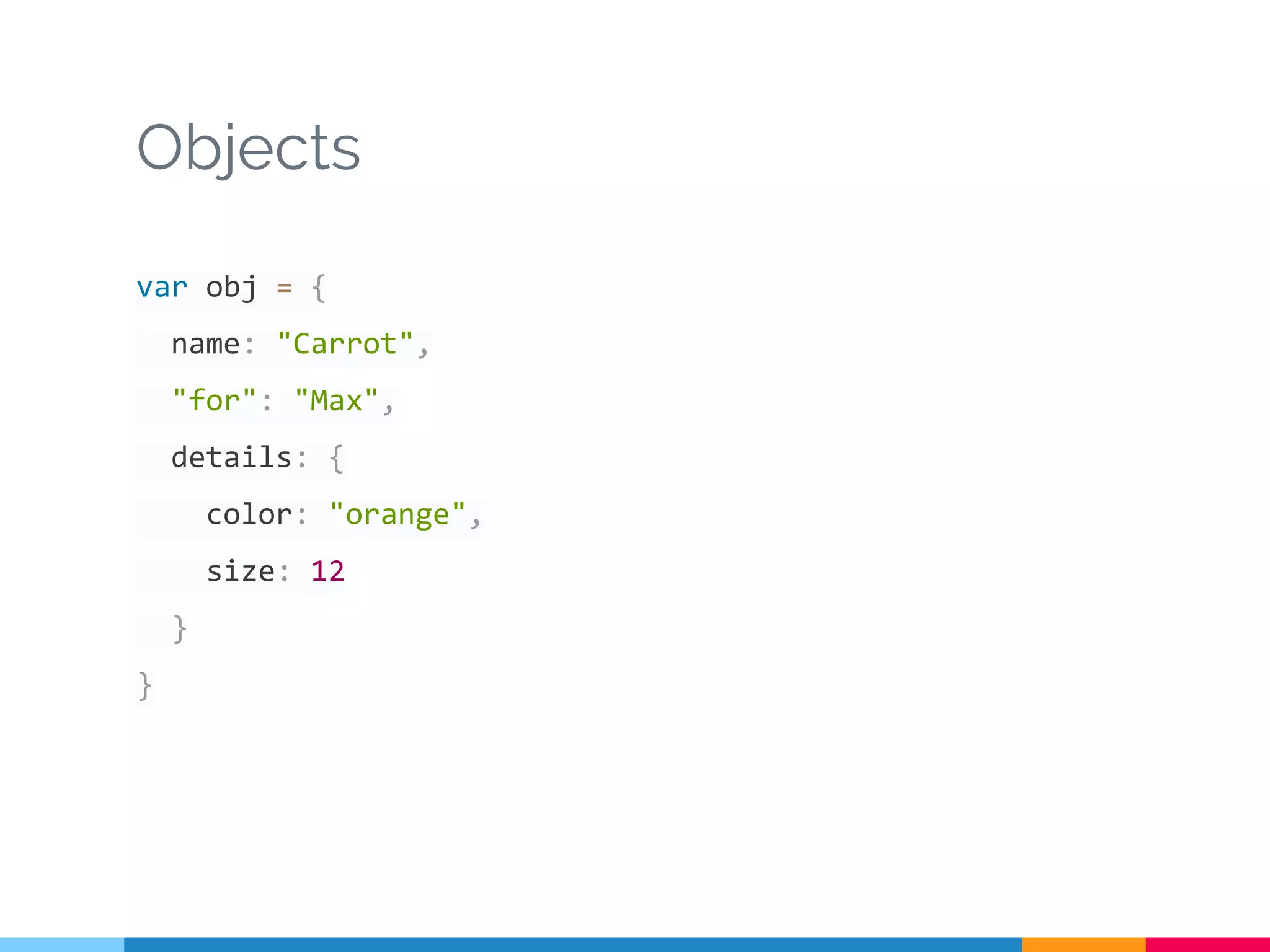
![Array
var a = new Array();
a[0] = "dog";
a[1] = "cat";
a.push("parrot");
a.length; // 3
OR
var a = ["dog", "cat", "parrot"];
a.length; // 3](https://image.slidesharecdn.com/javascriptintro-170117160234/75/Javascript-intro-for-MAH-13-2048.jpg)
![Fun fact
array.length isn't necessarily the number of items in the
array.
Example:
var a = ["dog", "cat", "parrot"];
a[100] = "koala";
a.length; // 101 ---OMG!!!](https://image.slidesharecdn.com/javascriptintro-170117160234/75/Javascript-intro-for-MAH-14-2048.jpg)
